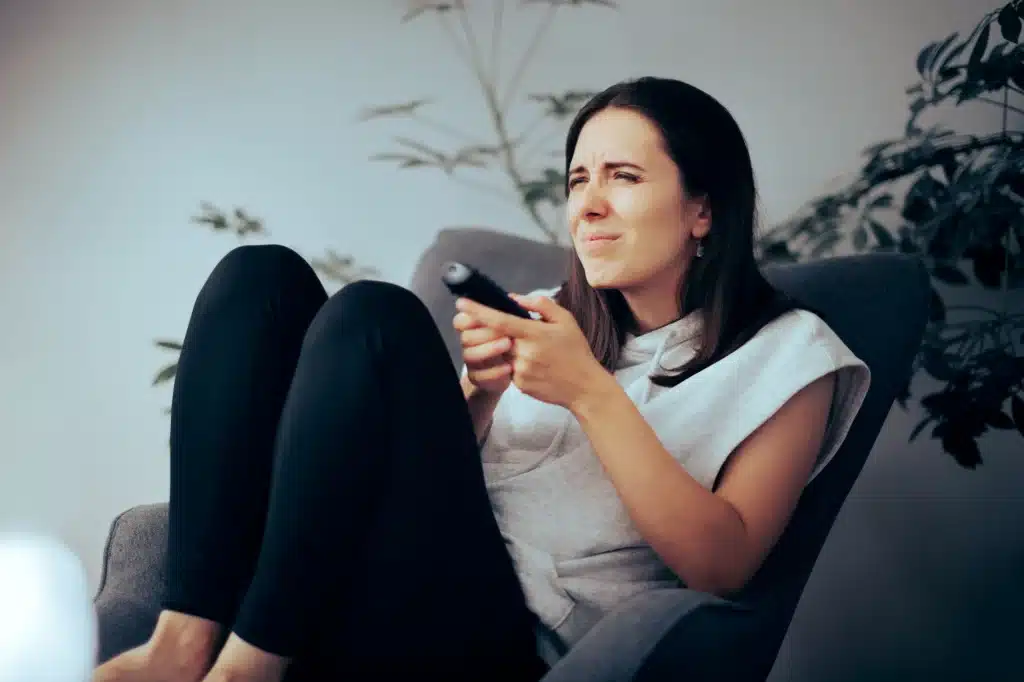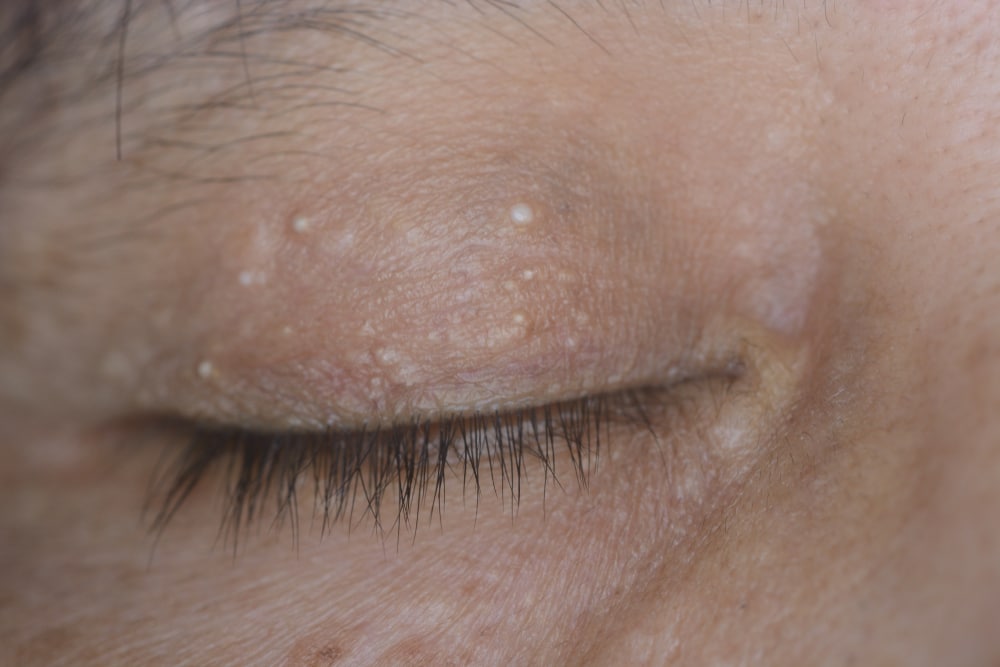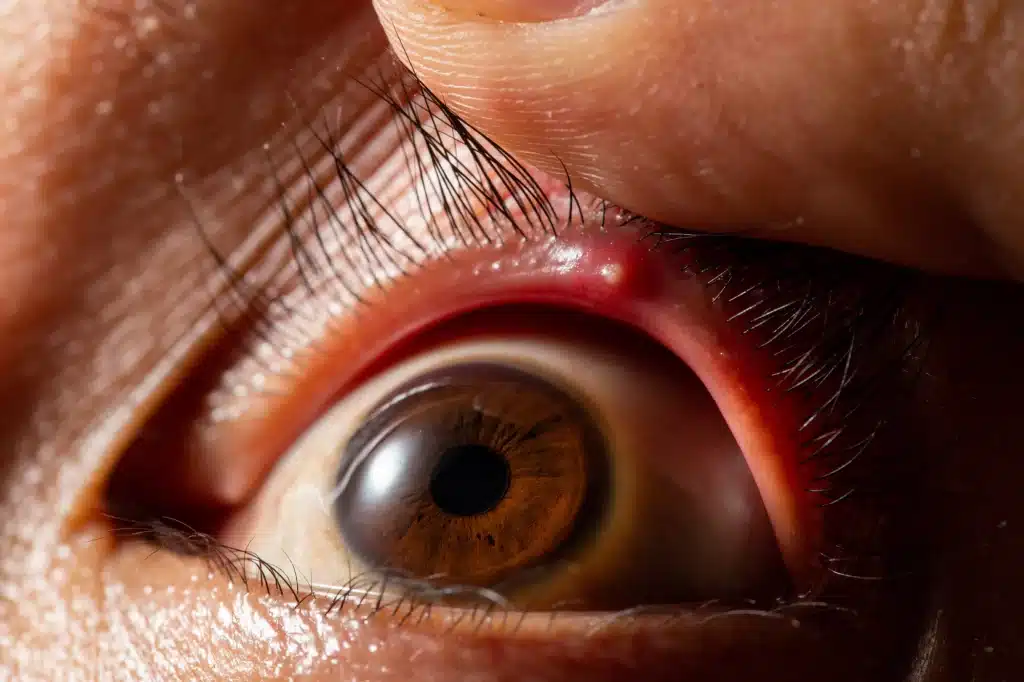Medically Reviewed by: Edward C. Wade, M.D., F.A.C.S.
How to Treat Digital Eye Strain
March is Save Your Vision Month, and the American Optometric Association is spreading awareness on the topic of digital eye strain. Due to the effects of the COVID-19 pandemic, many individuals found themselves spending more time in front of a computer, phone, or TV. As working from home becomes increasingly common, our eyes are continuously glued to screens.
Whether for work or for pleasure, the prolonged time spent in front of a screen can have negative effects on our eyes in the form of digital eye strain. In this article, the experts at Eye Center of Texas will be explaining what digital eye strain is, digital eye strain symptoms, and how it can be treated.
What is digital eye strain?
Do digital devices cause eye strain? Digital devices can be responsible for eye strain, especially digital eye strain. Here’s how.
Digital eye strain, also referred to as computer vision syndrome, refers to a number of eye and vision-related problems that are caused by too much time spent in front of digital screens. Digital screens emit blue light that scatters once it enters the eye –– this causes our eyes to work harder or strain to focus on that light so that we can read what is on the screen. Digital eye strain occurs with increased blue light exposure and can lead to issues with your vision if not corrected.
Other contributions to digital eye strain can include:
- Poor lighting
- Glare on a computer, television, or phone screen
- Viewing a screen from too close or too far away
- Uncorrected vision problems
Digital eye strain symptoms
The most common digital eye strain symptoms include:
- Digital eye strain headache*
- Blurred or double vision
- Dry eyes
- Eye fatigue, itching, tearing, or redness
- Neck and shoulder pain
- Light sensitivity
Many people wonder, “Can eye strain trigger migraines?” Migraines can form as a result of prolonged exposure to blue light. Because our eyes have to work overtime when we use digital screens, and if we look at them for too long without protection or any breaks, painful migraines can be one of many consequences.
Does digital eye strain go away? Yes, most of these symptoms are short-term and temporary. However, if no measures are taken to help combat digital eye strain –– especially if these symptoms are coupled with pre-existing eye conditions including presbyopia or astigmatism, the effects could be more severe. It’s best to begin looking for solutions before more problems are created.
Digital eye strain treatments
Digital eye strain treatments can range from simple habit changes to easy home remedies to clinical treatments. It all depends on your specific needs and circumstances. For professional advice, schedule an appointment with an optometrist at Eye Center of Texas to discuss your treatment options.
In the meantime, here are some tips you can use at home to help if you’re experiencing symptoms of digital eye strain:
Practice the 20-20-20 rule
The American Optometric Association recommends that people follow the 20-20-20 rule when using digital devices to prevent eye strain. For every 20 minutes spent looking at a screen, look at something that is 20 feet away every 20 seconds. It’s simple but can be effective.
Turn down your screen brightness
Many cases of eye strain from phone use or any other digital device can be helped by simply turning down the brightness! Reducing the glare from your screen will make device use easier on your eyes and can prevent excessive strain.
Computer glasses
Similar to how we wear sunglasses to protect ourselves from UV damage to the eyes, computer glasses or blue light glasses can be an effective way to protect your eyes from excessive blue light exposure. What are computer glasses? Computer glasses are prescription glasses made specifically for computer work. They are, in other words, activity-specific glasses that can alleviate eye strain if made with your specific needs in mind.
Currently, there is no one treatment for how to cure dry eyes permanently, a common symptom of digital eye strain that can be helped by wearing computer glasses –– however, there are home remedies and clinical treatments that can help treat your dry eyes. Ask your optometrist about your options to find the best solution for you.
LASIK or Laser cataract surgery
The treatment options mentioned above are temporary solutions. If you are someone who spends almost every day in front of digital devices or is currently experiencing other vision issues, LASIK or Laser cataract surgery may be your best option for treating your vision problems.
With these procedures, you won’t need to rely on glasses or contact lenses anymore. Our surgeons at Eye Center of Texas have successfully performed over 80,000 cataract procedures and over 75,000 LASIK procedures –– which means a great multitude of patients have achieved 20/20 vision.
If you are looking for a long-term solution, talk to an ophthalmologist from Eye Center of Texas today to see if you are a candidate for these procedures.
Treat Digital Eye Strain with the Help of Eye Center of Texas
There’s no denying that we are living in a digital world –– but that doesn’t mean our eyes have to suffer the consequences. We should all take extra steps to take better care of our eyes this year. The experts at Eye Center of Texas are here to help you find your perfect solution to symptoms of digital eye strain. It may be inevitable, but it is certainly treatable with our help.
Request an appointment online today to meet with one of our top eye care experts.
More Helpful Articles by Eye Center of Texas:
- Lasik Before and After
- What Causes Thin Corneas?
- Is Cornea Transplant Surgery Painful?
- Pterygium Surgery Recovery in Houston
- PRK Recovery Time
Related Articles
Financing Options Available
Apply today to find a financing option that meets your needs.
Our Locations
Houston/Bellaire
6565 W. Loop S., Suite 650Bellaire, TX 77401
Medical Office:
713-797-1010
Medical Fax:
713-357-7276
LASIK/Near Vision:
Office: 713-395-1515
Fax: 713-357-7278
Pasadena
4415 Crenshaw RoadPasadena, TX 77504
Medical Office:
281-977-8800
Medical Fax:
281-977-8877
Sugar Land
15200 S.W. Freeway, Suite 130Sugar Land, TX 77478
Medical Office:
281-277-1010
Medical Fax:
281-277-4504
Clear Lake
455 E. Medical Center Blvd., Suite 110Webster, TX 77598
Medical Office:
281-332-1397
Medical Fax:
281-282-9152
Katy
Greenhouse Medical Plaza2051 Greenhouse Road, Suite 110
Houston, TX 77084
Medical Office:
346-547-7070
Medical Fax:
281-214-2971
The Woodlands/Conroe
100 Medical Center Blvd., Suite 118Conroe, TX 77304
Medical Office:
936-647-1610
Medical Fax:
936-647-1620


